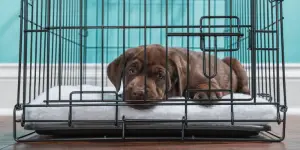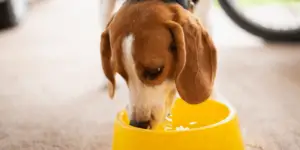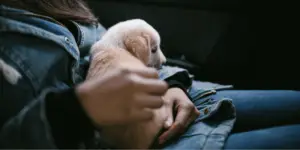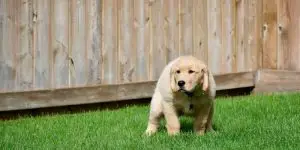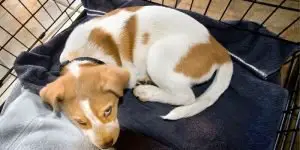
How to help your dog lose weight through exercise
- Written by Joshua Gordon
- Last updated
In this article
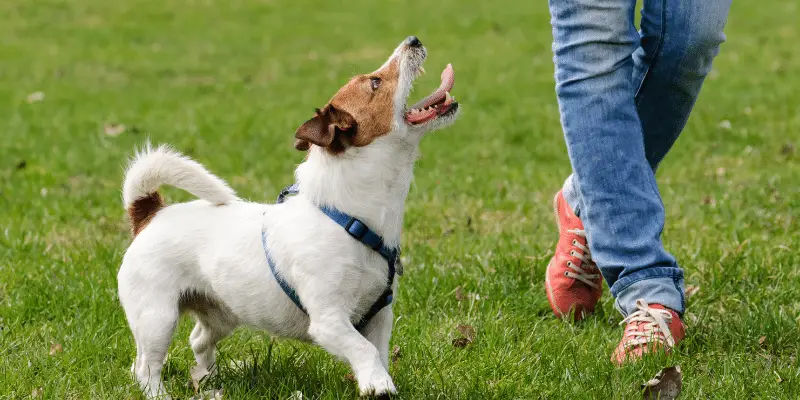
How to help your dog lose weight through exercise
Dogs who are overweight are at risk of many health issues, including heart disease and diabetes, which is why it’s important to get them back into shape as soon as possible. But chances are, your dog isn’t going to lose weight by themselves, so you’ll need to help them out.
Alongside good nutrition, exercise is an important aspect for keeping your dog fit and healthy. Most dogs won’t burn enough calories for weight loss from normal walks, however, so this is why you should look for other exercise options and methods to get your dog more active.
Below we’ll be going over different ways to help your dog lose weight through exercise to keep your dog happy, healthy, and, hopefully, less of a couch potato.
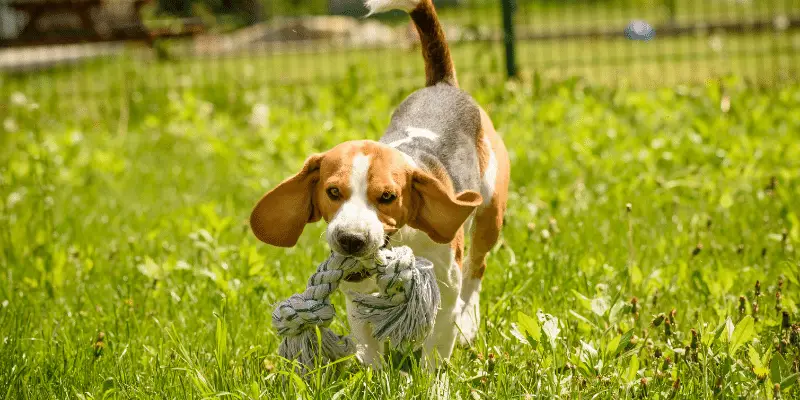
How much exercise does my dog need?
Most dogs benefit from 30 minutes to 2 hours of exercise each day. The amount varies depending on your dog’s age, breed, and overall health. Seniors and very young puppies don’t need as much exercise as adults.
Additionally, more athletic and active breeds like the Border Collie, Beagle, and Labrador Retriever require a lot of physical activity than companion breeds like the Bulldog and Pug.
If you’re not sure of your dog’s activity levels, we’ve gone over how much exercise dogs need based on their breed and age in much greater detail here.
Alongside regular exercise, using a dog activity tracker (it’s essentially a doggy Fitbit!) can be great for monitoring your dog’s fitness, allowing you to check their weight, activity levels, and behaviour.
For these reasons, dog fitness trackers are particularly advantageous for canines who need to shed a bit of extra weight. They help you make sure your four-legged companion is getting the right amount of exercise, and help you record their progress.
Thinking of getting an activity tracker for your dog but need some recommendations? Take a look at our other article on the best dog activity trackers to help you find the right one for your canine.
Help your dog move more
Now, this is a little easier said than done, especially if your dog is a bit of a couch potato. But, helping your dog move more will improve their fitness and help get them in the right mindset. Exercise is one way you can help your dog be a bit more active, but there are things you can do to encourage your dog to be a bit more active around the house.
Food dispensing balls and interactive puzzle toys are good for getting your dog stimulated, both physically and mentally. You could also squeeze in some training or play sessions like tug-of-war and fetch to get your companion moving.
Additionally, try changing the location of your dog’s food bowl regularly, such as it moving upstairs or downstairs. That way, your dog will always have to move to reach their food.
Slow-feeding food bowls are a good idea as they help prevent your dog from eating too fast and feel fuller.
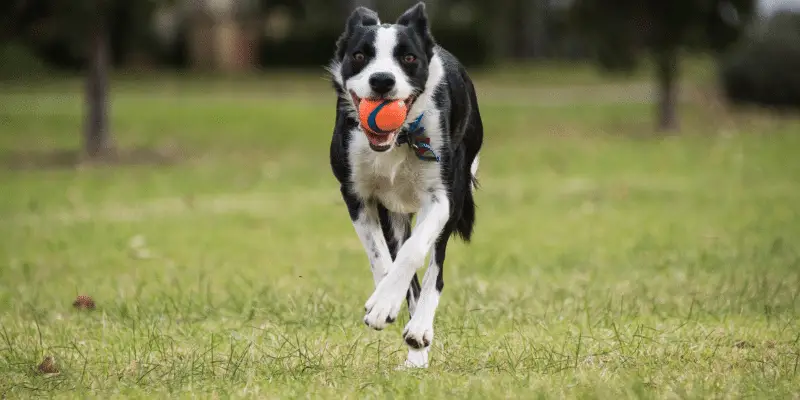
Making Exercise Fun
While walks and excited dogs usually go hand in hand, some pooches prefer to switch out the leash for a long nap or cuddle with their owner. Even the most energetic and walk-loving canines can grow bored of doing the route each time, with the same smells, sights, dogs, etc.
But if you make your dog’s exercise routine fun and regularly change it up, it can help motivate your dog to be more active (and enjoy the process!).
This could be alternating routes to your local park or going to a different park altogether. You could also give your dog different exercise options during their walk, such as swimming, running, and off-leash time, which we’ll cover a little more about below.
Walking
Walks are a necessary part of owning a dog, and you should be committing to them every day. However, not many dogs walk at a pace that increases their heart rate for weight loss.
The average pace that dogs walk at is 20 to 25 minutes per mile, which doesn’t offer a high-intensity workout. Dogs also make stops (roughly every one or two minutes) to sniff or mark their territory.
If you want to walk your dog to help them lose weight, you should try to increase the speed and duration of it. Do this gradually, however, as overweight dogs can develop respiratory distress when exercising, especially brachycephalic (short-nosed) breeds.
The excess fat in their chest limits how much the lungs can expand, while the extra fat in their stomach presses against the diaphragm. This means the lungs in overweight dogs have to work much harder to produce oxygen.
So, if your dog is just starting out, try a minute or two of brisk walking before slowly ramping up the difficulty. Over time your dog’s fitness will increase and they will be able to walk quicker and for longer.
Keep an eye on your dog’s breathing during exercise, and don’t be afraid to cut the session short if they are struggling. If your dog is having difficulty breathing or coughing, don’t persist as signs like these can be distressing or downright dangerous for your companion.
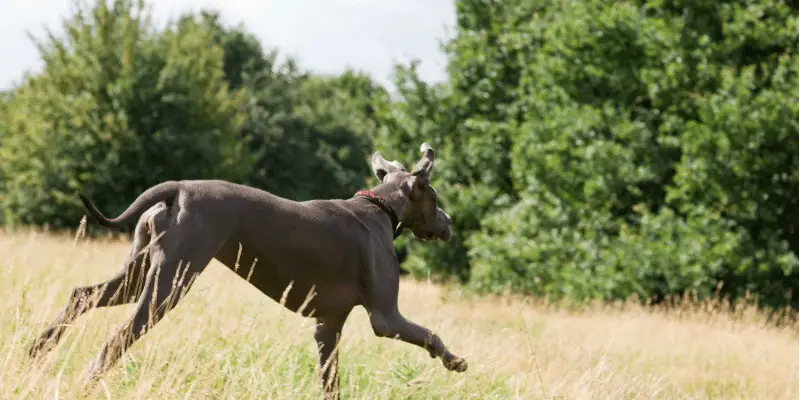
Walking Off-Leash
If you are able to let your dog off-leash, it’s a great way to help them burn off some calories. A lot of dogs run, jog, and sprint when given some freedom on their walk, which allows for a more rigorous workout than regular walking.
Better yet, if there are other dogs at the park (and your dog is friendly), then it gives your dog some time to socialize and maybe even find a new friend to play with.
Running
Running is an excellent aerobic activity that is one of the most effective methods for burning calories, both in humans and dogs. Dogs that are capable of running for just 30 minutes can lose 3.75 calories per pound of body per weight. For a 20-pound dog, that equates to 75 calories per half an hour.
Although running with your dog is great for increasing their fitness, you should speak to your vet before doing so. Heart issues, arthritis, hip dysplasia, or other health concerns could make running challenging or dangerous for your dog.
Additionally, young dogs under the age of 12 months can injure their joints by jogging or running on hard surfaces like concrete or asphalt.
Swimming
Swimming is one of the best types of exercise for dogs as not only is it low-impact and non-weight bearing, but it also offers a wealth of health benefits.
It strengthens the hearts and lungs, increases metabolism, decreases inflammation, and improves circulation (ideal for healthy skin and coat). By moving their legs against the friction of the water, your dog will use each major muscle group, helping build up strength.
Swimming is ideal for overweight dogs and those suffering from orthopaedic issues like arthritis as the water helps support their weight, putting less strain on their joints and muscles. It allows your dog to improve their metabolic rate and burn excess calories without potentially hurting themselves.
Playing Catch
Playing catch or fetch with your dog isn’t just a fun activity, it’s a high-intensity one too! Throwing your dog their favourite ball or frisbee will help them burn off extra calories as they run to retrieve it, and it won’t even feel like exercise.
You can play catch with your dog during their walk to add a bit of diversity to their normal routine, giving you a great chance to fit in some quality bonding and fitness time with your pooch.
Nutrition and Dieting
Regular exercise will only do so much with helping your dog lose weight. A healthy diet is also vital for keeping your dog in tip-top shape. Dogs gain weight by consuming more calories than they expend, so even if your dog is active each day, they can still pile on the pounds if they eat too much food.
You should avoid feeding your dog table scraps and treats if they are overweight, and also limit how much food they have at mealtimes. Stick to a consistent feeding routine and avoid letting your dog graze throughout the day. Around 3 to 5% of body weight loss per month is a safe guideline for dogs.
Before you put your dog on a diet, consult a veterinarian so they can help you calculate a target weight for your dog. While overweight dogs will need to be given less food than those of a healthy weight, you don’t want them to lose too much weight in a short period.
Your vet can also recommend foods that can assist with weight loss, as the quality of your dog’s food is important. Many commercial dog foods are full of fillers and carbohydrates, and ideally, you should opt for a food that is low in fat and calories, while also being higher than average in protein.
There are a lot of tools and information online you can use to help you estimate how many calories your dog needs each day and general feeding and drinking guidelines.
Try Breaking Up Meals
Breaking up your dog’s meals over the day can help aid with weight loss. Smaller portions split up multiple times (three to six) take up more energy to digest, which helps burn calories.
Additionally, rationing out your dog’s daily food allowance and spreading it out over the day will help regulate their insulin levels, which reduces hunger pangs and makes them feel fuller for longer.
Find the Non-Food Rewards Your Dog Loves
While we all love to reward our dog with tasty treats and snacks, this can be detrimental to their weight loss plan. Table scraps and commercial dog treats are often caloric, and as overweight dogs need to burn more calories than they consume to lose weight, this isn’t ideal.
Rather than give your dog an unhealthy treat after a walk or training session, find non-food ways to reward them. This could be a new toy (or even one they’re not allowed too often), an extra belly rub and head scratch, or some time set aside for playing and cuddling. While many dogs are food-driven, nothing quite beats being with their favourite person.
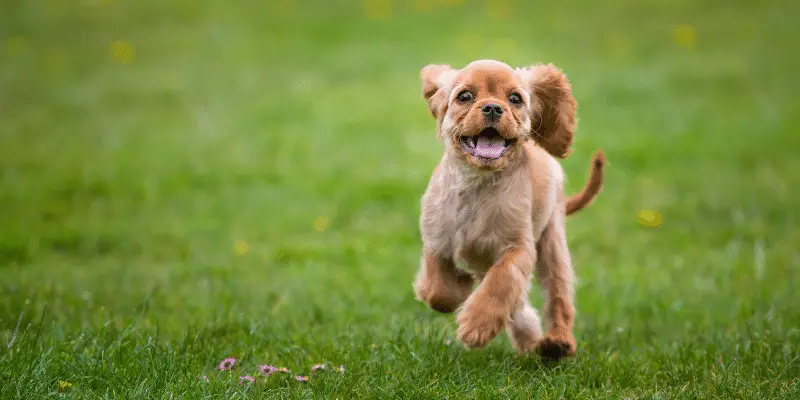
Start Them Young (Prevention)
One of the best ways to combat obesity in dogs is to stop it from happening in the first place. From an early age, you should establish a proper feeding schedule for your dog.
Try to avoid free-feeding your dog: offer food at a similar time each day and only leave it down for a specific duration, such as 15 minutes. If your dog leaves any food, take it away and wait until their next mealtime to feed them again. Try to limit table scraps and between-meal snacks from a young age too.
Make sure you stick to proper portion sizes for your dog’s size and weight. Most commercial dog foods will have feeding instructions on the back of the packet or tin, but you can also look up feeding suggestions for your dog’s specific breed.
Lastly, be consistent with your dog’s exercise. Dogs need daily walks, and ensuring you never miss one will help keep your dog active and prevent them from inheriting lazy habits.
What If My Dog Isn’t Losing Weight?
If you’re exercising and feeding your dog properly but they’re still not losing weight, then there may be a medical reason for their weight gain. Get your dog checked out at the vet if they’re having difficulty losing weight as health issues like low thyroid levels and Cushing’s Disease could be at fault.

Written by: Joshua Gordon
Head of Research and Editorial, Joshua has over 7 years of experience as a finance and automotive research consultant. He is a childhood pet owner and dog enthusiast.

